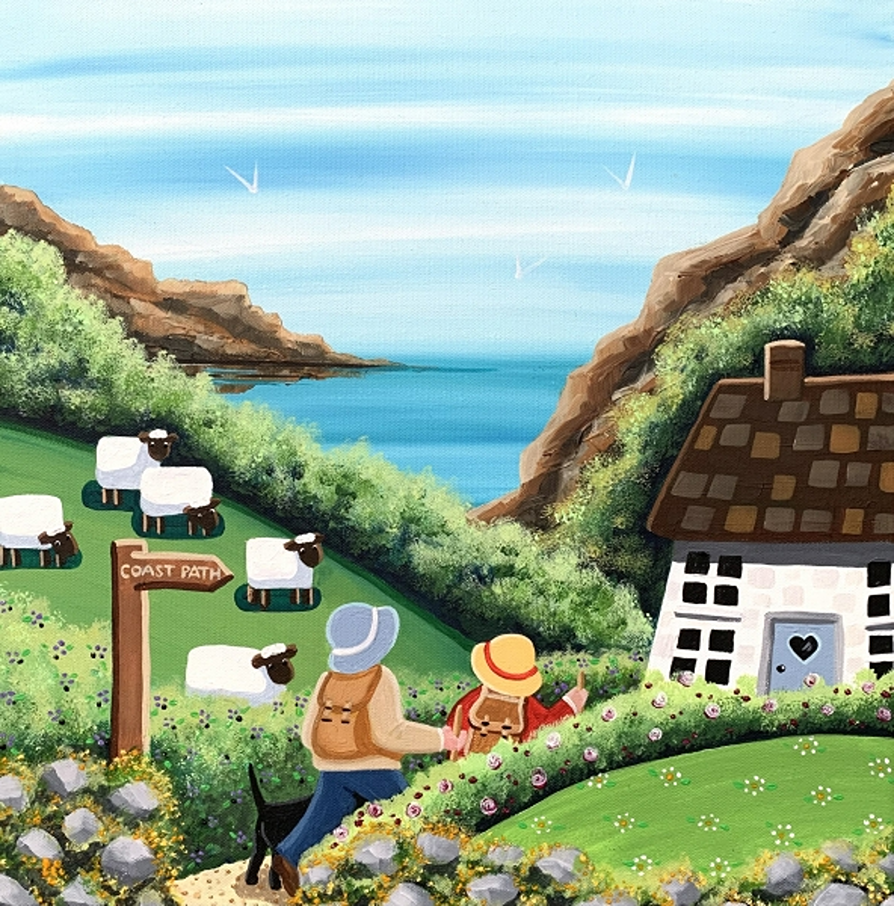
The coast-to-coast path is a popular walk created by Alfred Wainwright, a writer of Lake District fell-walking guides for over 40 years (he took a pay drop to move here, after becoming enthralled on a holiday). After an unhappy first marriage, he married the love of his life (on condition that she walked several paces behind him, and didn’t talk on their walks!) It seemed to work, as they remained blissfully happy until he died of natural causes, at a ripe old age.
The walk takes around 12 days (stopping off at bed-and-breakfasts) and starts at the pretty seaside Cumbrian village of St Bees (facing the Irish Sea, just a few miles from Whitehaven, a town where ‘the sea meets the Lake District). And ends when you paddle your toes in the East Yorkshire village of Robin Hood’s Bay.
If taking fit young dogs for some of the route, good tour companies filter for suitable accommodation. Read this book on dog safety (includes a simple first aid guide). Always follow the Countryside Code (to keep dogs and livestock safe). Read The Essential Guide to Hiking with Dogs for tips by Jen Sotolongo.
The coast-to-coast-walk is not a national trail, more just connecting dozens of Alfred’s favourite footpaths, bridleways and minor roads, to create the most popular long-distance trail in the world. The beginning is more strenous as you walk the hilly Lake District, then pans out to more leisurely walking through meadows as you progress through the Yorkshire Dales. Despite being 192 miles, it only covers two counties (Cumbria and Yorkshire). You’ll see plenty of waterfalls and even more sheep (Herdwick sheep will change to Swaledale sheep!) If you don’t drive, there’s a train station at St Bees, and Robin Hood’s Bay is a short bus or taxi ride form Whitby.
Remember to take with you:
- Phone numbers (if concerned for farm animals or wildlife)
- A good map, compass & binoculars
- A quality whistle & hi-glo clothing
- A battery-free torch or lantern
- Vegan alternatives to winter woolies!
- A good pair of vegan hiking boots (and comfy socks)
- A sustainable raincoat (ideally windproof)
- A GPS-enabled cell phone (and paper map with waterproof protection). Tell people where you’re going, and avoid walking at night or in bad weather (check at The Met Office and mountainforecast).
resources to help your coast-to-coast walk
Contours offers inclusive tours (with dog-friendly filters). These are expensive (£1500 to £2000) but no more than if you hire accommodation yourself, as it includes breakfast, baggage transfers, info guides and maps. The budget option is simply to only do part of the walk, and find somewhere to stay for a couple of nights (find accommodation from private owners at Snaptrip).
The Coast to Coast Path is the official 2024 guidebook. It features maps and route planners, plus details on places to stay and camp, plus local pubs. Or go for the older but more interesting guide by Alfred himself, with pictures (updated regularly). You can report damaged paths or overgrown hedgerows. Alfred was extremely fond of nature and wildlife, and donated profits from his books to animal charities, and a local animal shelter is even named after him.






